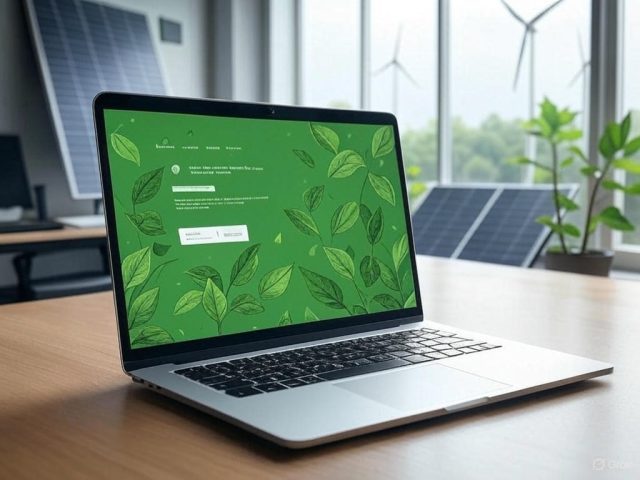
Sustainable web design is transforming the digital landscape in 2025. As e-commerce businesses strive to align with eco-conscious consumers, reducing a website’s carbon footprint is no longer optional—it’s a competitive edge. This guide explores actionable strategies to create environmentally friendly websites, from optimizing code to choosing green hosting providers.
Why Sustainable Web Design Matters for E-Commerce
Consumers today prioritize sustainability. A Nielsen study found that 66% of global consumers are willing to pay more for sustainable brands. For e-commerce, sustainable web design not only reduces environmental impact but also boosts brand loyalty and SEO rankings, as search engines like Google reward fast, efficient sites.
Websites contribute to carbon emissions through server energy consumption, data transfer, and device usage. By adopting sustainable web design, e-commerce businesses can lower their digital footprint while enhancing user experience. To lead such initiatives, entrepreneurs can benefit from a purpose-driven mindset, like those cultivated through coaching at JJC Unlimited, which empowers business owners to align personal growth with sustainable goals.
Key Principles of Sustainable Web Design
Creating a sustainable website involves optimizing every aspect of its design and hosting. Here are the core principles to follow:
1. Optimize Images for Efficiency
High-resolution images drive e-commerce sales but can bloat page sizes. Use modern formats like WebP and compress images with tools like TinyPNG. This reduces data transfer, lowering energy use and improving load times.
2. Streamline Code for Performance
Clean, efficient code is the backbone of sustainable web design. Minify CSS, JavaScript, and HTML to reduce file sizes. Tools like Minifier can help. Avoid unnecessary plugins, as they increase server requests and energy consumption.
3. Choose Green Hosting Providers
Your hosting provider plays a significant role in your website’s carbon footprint. Opt for providers like GreenGeeks or HostPapa, which use renewable energy. Check their sustainability policies to ensure alignment with your brand’s values.
Measuring Your Website’s Carbon Footprint
Before optimizing, assess your website’s environmental impact. Tools like Website Carbon Calculator estimate your site’s carbon emissions per page view. For example, a typical e-commerce site with heavy images might emit 4.61g of CO2 per visit. Use this data to set reduction goals.
Practical Steps to Implement Sustainable Web Design
Ready to make your e-commerce site greener? Follow these steps:
- Audit Your Website: Use tools like Google PageSpeed Insights to identify inefficiencies. Focus on reducing page weight and server requests.
- Switch to Green Hosting: Migrate to a provider committed to renewable energy. This can cut emissions by up to 80%, according to The Green Web Foundation.
- Optimize Frontend Design: Use lazy loading for images and videos to reduce initial page load energy. Implement responsive design to ensure efficiency across devices.
- Educate Your Team: Train developers and designers on sustainable web design practices.
Case Study: Sustainable Web Design in Action
Take inspiration from Patagonia, an e-commerce leader in sustainability. Their website uses minimalistic design, compressed images, and green hosting to achieve a carbon footprint of just 1.2g of CO2 per page view. By promoting their eco-friendly practices, Patagonia has strengthened customer trust and driven sales.
Benefits of Sustainable Web Design for E-Commerce
Adopting sustainable web design offers multiple advantages:
- Cost Savings: Efficient websites reduce server costs and improve scalability.
- SEO Boost: Faster sites rank higher on Google, increasing organic traffic.
- Customer Loyalty: Eco-conscious consumers prefer brands that prioritize sustainability.
Looking Ahead: Sustainable Web Design and Personal Growth with JJC Unlimited
As sustainability becomes a core consumer value, e-commerce businesses must prioritize sustainable web design. By optimizing images, streamlining code, and choosing green hosting, you can reduce your digital carbon footprint while enhancing performance and customer trust. However, building a sustainable brand goes beyond technology—it requires a purpose-driven mindset.
This is where JJC Unlimited can make a difference. Their life coaching and personal development programs empower e-commerce entrepreneurs to cultivate resilience, clarity, and purpose, aligning personal growth with eco-conscious business goals. Whether you’re navigating the challenges of adopting sustainable web design or seeking to inspire your team, JJC Unlimited’s services can help you lead with intention. Visit jjcunlimited.com to explore how their coaching can elevate your sustainable business journey.
Start small—audit your site today and take one step toward a greener web. For more inspiration, contact JJC Unlimited today and see how we can help you!


